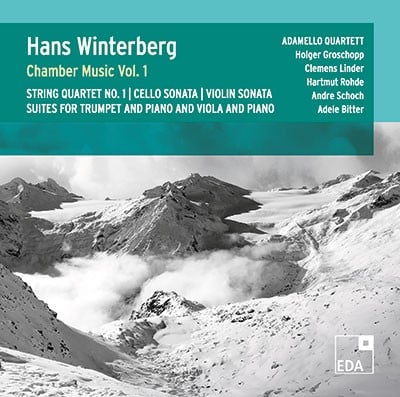Bote & Bock
Winterberg's Cello Sonata from 1951 was possibly accompanied by the composer himself at a performance, as suggested by an annotated copy of the score. Nothing is known about the cellist, about the venue and time of the concert, or about later performances during Winterberg's life. The Cello Sonata – Winterberg's only contribution to this genre – is a perfectly crafted, virtuoso, extremely effective, but also deeply moving piece in which the characteristics of his personal style are clearly evident and that is therefore an outstanding introduction to his style. With its three-movement structure and short duration of less than thirteen minutes, the work displays neoclassical restraint – verbosity, contemplation, and romantic fervor are alien to Winterberg. But in his works, succinctness and brevity always go hand in hand with intensity and an exuberant abundance of action within a small space. It is music whose sinews are stretched to the breaking point. The first movement introduces us to the almost inexhaustible cosmos of Winterberg's rhythmic games of deception. The metrical decidedness of the defiant, indeed angry march with which the movement begins is immediately sabotaged. That which Winterberg develops out of the ternary cell of the iambic rhythm so characteristic of the Czech language as well as of Czech music is admirable; it dominates the audacious second part of the exposition and gradually also overruns the march theme. The constant disruption of the measure accents by asynchronous syncopations is taken to extremes in the third movement, where a small manipulation in the piano's left-hand accompaniment is enough to make us believe for a moment that ragtime had its origins in Czech folklore. The hyperactivity of the outer movements is sharply contrasted by a meditative, highly emotional slow movement, a large vocal scene for the cello, as if it were a "Souvenir de Prague" from the pen of late Fauré, but with "deeper shadows … than we know from French music" (Michael Haas, Preface of the Edition, Boosey & Hawkes, Berlin 2024).
Frank Harders-Wuthenow

Adele Bitter, cello / Holger Groschopp, piano
eda records EDA 051
